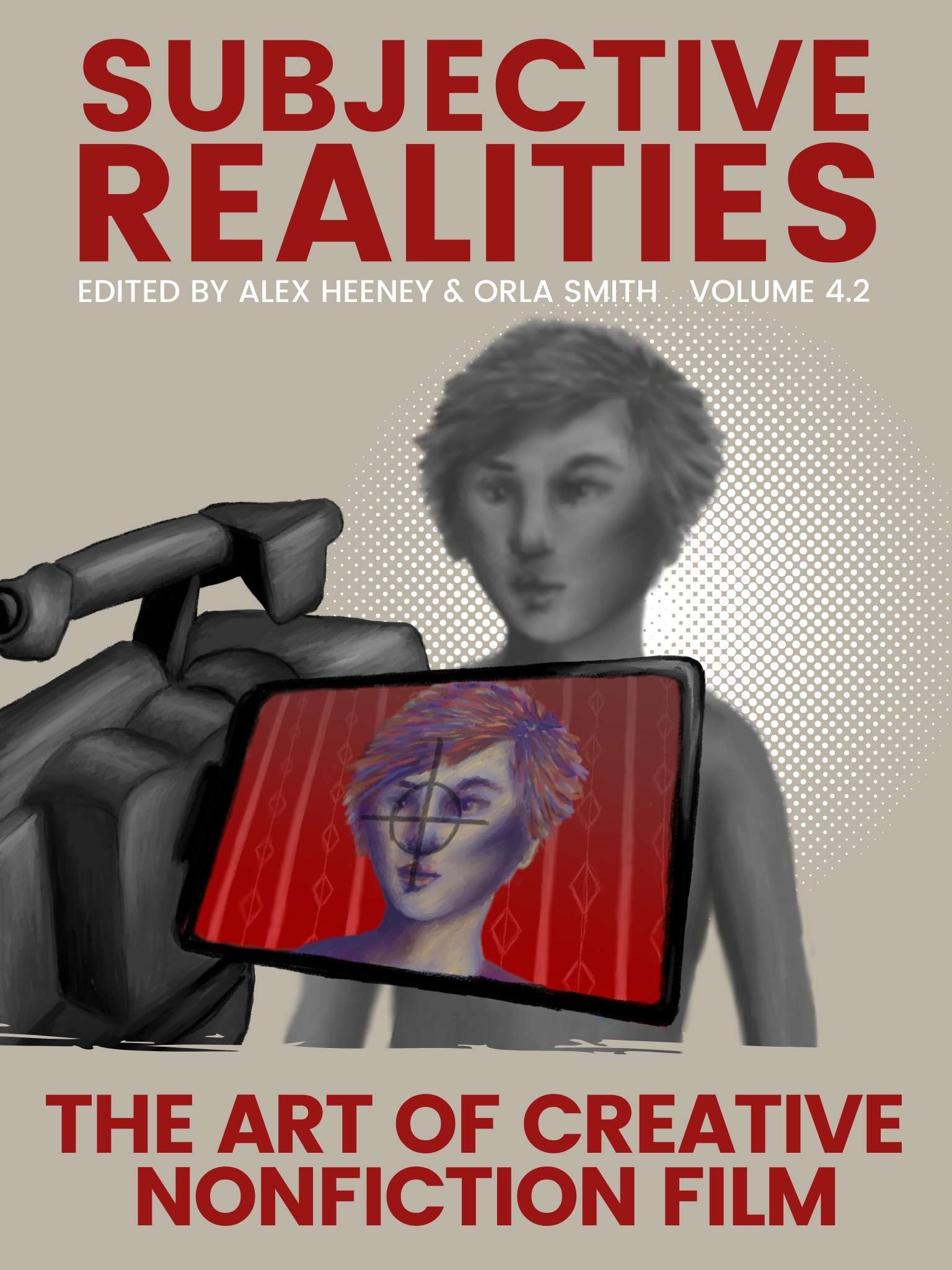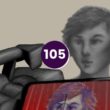Fifteen critics and filmmakers weigh in on the films that changed how they thought about documentary in this creative nonfiction survey.
Our ebook on creative nonfiction, Subjective realities, is out on Friday. Click here to pre-order.
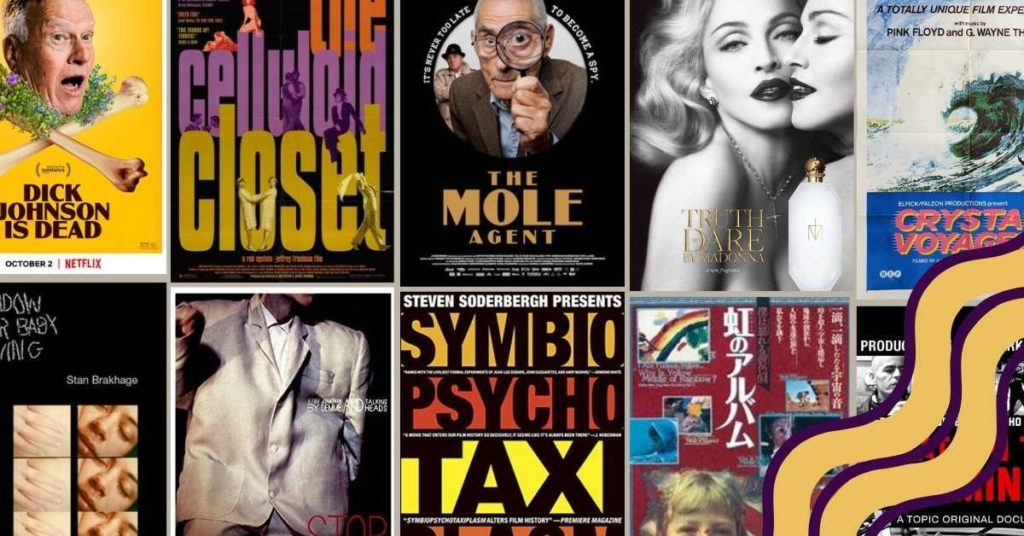
This article is in celebration of our ebook Subjective realities: The art of creative nonfiction film. Click here to find out more about the ebook and get your copy.
To celebrate this Friday’s release of our new ebook, Subjective realities: The art of creative nonfiction film, we decided to reach out to filmmakers and critics to weigh in on films that have inspired them. Not necessarily their favourite nonfiction films, but the ones that made them go, “Oh! I didn’t realise a documentary could do that.” Films that expanded their own personal definition of what a documentary could be, and helped them look outside the box.
What we got was a range of answers, without a lot of overlap. There were a few films that showed up multiple times: Orson Welles’s F for Fake (1975), Chantal Akerman’s News from Home (1977), and William Greaves’s Symbiopsychotaxiplasm: Take One (1968) were all mentioned three times. Kirsten Johnson’s Dick Johnson is Dead (2020) was picked twice. Johnson, Abbas Kiarostami, Joshua Oppenheimer, and Frederick Wiseman all feature multiple times for multiple films.
The fifteen responses we got were unique, personal, and a great source of recommendations for inspiring creative nonfiction.
Sean Boelman (@bigtunaonfilm), Founder of disappointment media
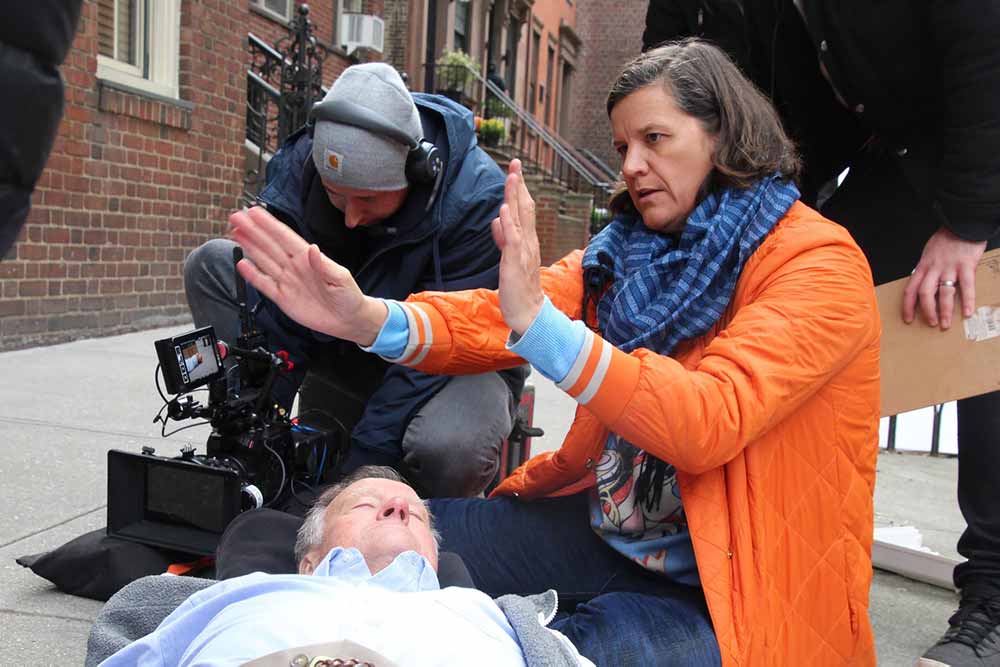
Dick Johnson is Dead (Kirsten Johnson, 2020): It’s a relatively recent film, but Kirsten Johnson’s film Dick Johnson is Dead is perhaps one of the most successful and intriguing examples of creative nonfiction that I have ever seen. The ‘reenactments’ (if one can even call them that) of Johnson’s own father’s theoretical deaths offer an interesting exploration of the film’s themes of mortality and grief. And with a bitingly funny edge to it, it is also one of the most entertaining documentaries of the new decade so far.
Grey Gardens (Albert Maysles, David Maysles, Ellen Hovde, Muffie Meyer, 1975): No list about the creative documentary would be complete without a mention of Grey Gardens, one of the most contested documentaries of all time. Although a discussion of the film’s ethics can make (and has made) for many articles of its own, there is no denying the ingenuity of the filmmakers’ verité approach. While this certainly isn’t the film to invent that technique, it’s the one that popularized it, leading to a complete renaissance in how we understand nonfiction filmmaking.
Woodstock (Michael Wadleigh, 1970): Michael Wadleigh’s documentary exploring the events of the famed Woodstock Music Festival is not just the greatest music documentary of all time, but one of the most ambitious nonfiction films ever made. Even though the director’s cut stretches to nearly four hours in length, it is an entirely captivating experience that will keep your attention in one sitting. The concert footage is undeniably excellent, but the thing that is really impressive is how Wadleigh weaves in the story of the festival goers into the performance, making the viewer feel immersed in the event. And the editing by Thelma Schoonmaker and a young Martin Scorsese (yes, that one), among others, is absolutely mind-blowing.
Glenn Dunks (@glenndunks), Film critic

Crystal Voyager (David Elfick, 1973): This Australian surfing doc (a box office hit in 1973) incorporates music, in particular Pink Floyd’s 23-minute “Echoes,” in ways that take it out of the then traditional realms of documentary and creates a psychedelic proto-MTV experience built around new cinematic rhythms.
Death in the Terminal (Tali Shemesh, Asaf Sudri, Dorit Inbar, 2016): I can’t recall a documentary from the 2010s so effectively misdirecting its audience only to pull the rug out from under them as this 2017 Israeli documentary about a terrorist attack. Its final five minutes, where its directors reveal the story they have really been telling, are devastating.
Hommage à Noir (Ralf Schmerberg, 1996): Regularly labelled a ‘visual poem’, this 1996 black and white musical celebration of African culture is more than just some variety of elevated ethnographic documentary. Rather, it feels like a new way of making non-fiction cinema that fuses art mediums across eras.
Kinky Gerlinky (Dick Jewell, 2002): No plot, just vibes. Queer vibes. Sexy vibes. In a way, to me, 2002’s Kinky Gerlinky is documentary in both its purest and most extremely radical forms. Performative and yet so very unvarnished and real, while eschewing the things that documentary is established as meant to be doing.
Madonna: Truth or Dare (Alek Keshishian, 1991): For all the ink spilled about Madonna’s acting, her greatest performance will always be as herself. Is the pop star an insufferable brat in this 1991 biographic concert doc? Probably. But what makes the film so brilliant is in how it subverts expectations while critiquing its subject in real time. But as it becomes clear there are multiple Madonna’s, which one is it critiquing?
Ben Flanagan (@manlikeflan), Editor at Cinema Year Zero
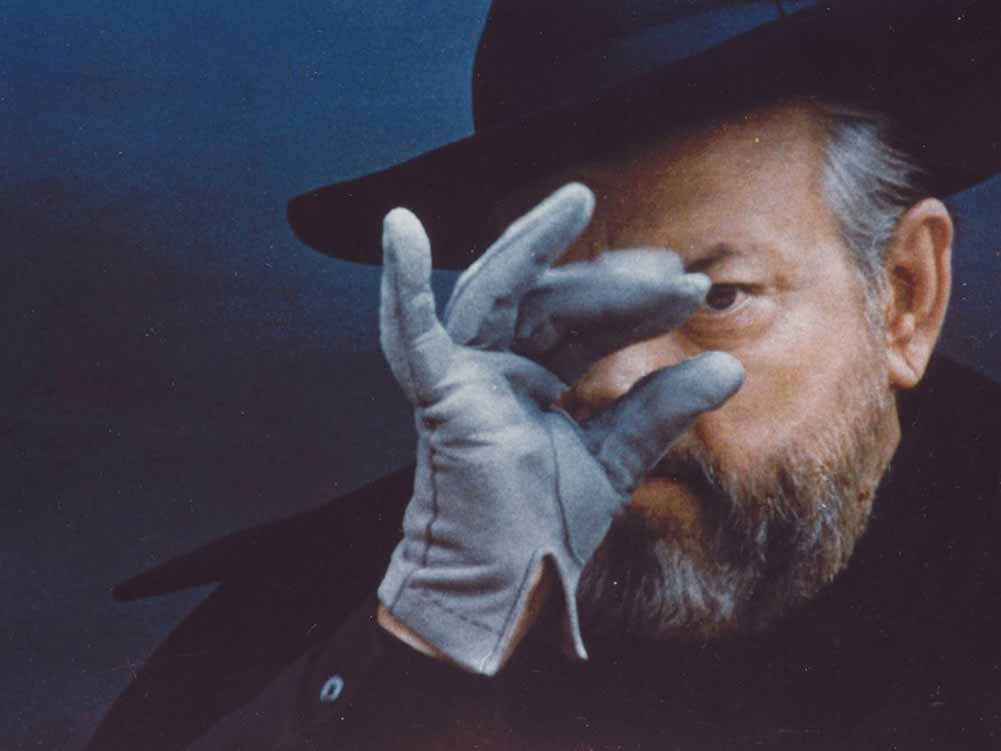
- F For Fake (Orson Welles, 1975)
- Sherman’s March (Ross McElwee, 1985)
- Citizenfour (Laura Poitras, 2014)
- Exit Through The Gift Shop (Banksy, 2011)
- Arboretum Cycle (Nathaniel Dorsky, 2017) — Nathaniel Dorsky taught me it’s okay to be bored 🙂
Ricardo Gallegos (@wallrgr), Editor in chief of La Estatuilla and contributor at But Why Tho? – A Geek Community
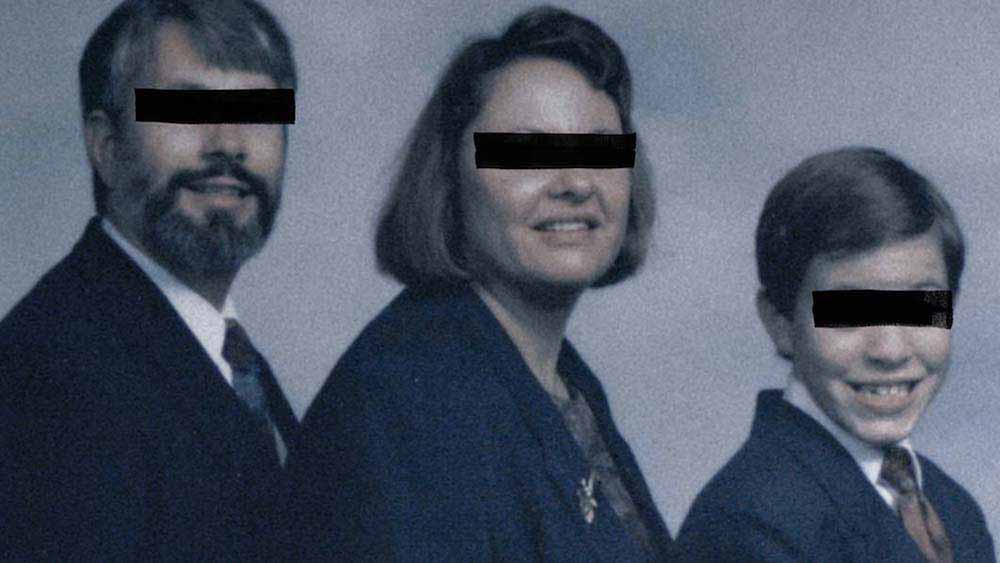
My love for documentaries just started blooming a couple of years ago, so most of the films in this list are quite recent. Thankfully there’s so much quality out there that thinking of creative nonfiction was pretty easy.
Dick Johnson is Dead (Kristen Johnson, 2020): The easy pick. Johnson explores dementia like no one has ever done before in film. This is creative and loving film therapy that confronts death and celebrates the joys of life using a smart blend of fiction and non-fiction; an exceptional example of the power of cinema to transform and preserve memories.
Enemies of the State (Sonia Kennebeck, 2020): I didn’t love this film, but when I read the task for this survey, this one sprung to mind almost instantly. Kennebeck presents the story of a hacker being prosecuted by the FBI. At first, it looks like a standard doc that brings to light the unfair prosecution, but then the director reveals that the hacker is actually guilty: everything Kennebeck did up to that point was to show you how easy it is to manipulate a narrative to spread lies. She manipulates you to land the point and understand the importance of always looking for concrete facts that help you dispel notions clouded by emotion. A clever and creative approach to nonfiction storytelling.
Gunda (Viktor Kossakovsky, 2021): Why is this breathtaking piece of art such a remarkable achievement in creative nonfiction? To create empathy around animal life, it doesn’t use shocking raw footage of animal abuse or slaughterhouses, nor does it try to be manipulative like so many others. It just follows a mother pig and her newborn piglets. Through Gunda, you see what life is all about. You see it in her eyes, in her breastfeeding, in the love for her sows. This is empathy used through simple observation. A creative and highly powerful tool to value animal life, something that is deeply needed in the world right now.
Searchers (Pacho Velez, 2021): Searchers presents a bunch of people browsing through their favorite dating apps; we can see a glimpse of their screens, but the focus is always on their faces. A highly creative idea through which Velez studies human relationships and the way we use modern technology to bond and find love.
The Witches of the Orient (Julien Faraut, 2021): To tell the story of a legendary Japanese volleyball team that inspired a whole country, Julien Faraut uses a unique combination of real footage of games and training sessions with scenes of the Attack No. 1 anime (whose creation was inspired by the team itself). This approach to nonfiction storytelling allows to not only show you the historic sporting achievements of ‘Oriental Witches’, but organically depict their profound influence on the culture around them. Faraut goes a step further during a memorable experimental montage that mixes lights, more anime, and Portishead’s ‘Machine Gun’ to illustrate their relentless training regime and how foreign media depicted it. I’ve never seen a sports documentary like this before.
Robert Greene (@prewarcinema), filmmaker of Kate Plays Christine and Bisbee ‘17
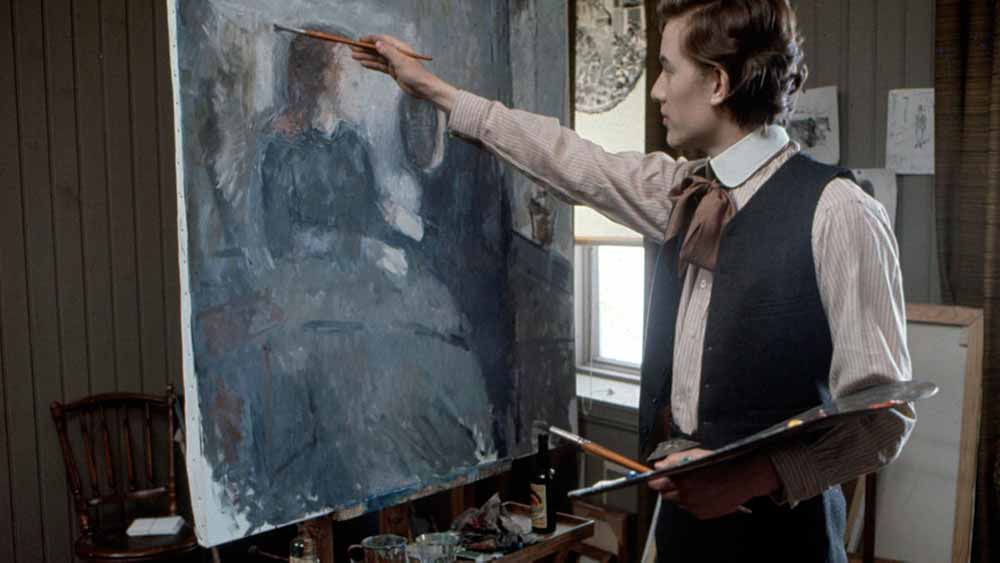
1. Edvard Munch (Peter Watkins, 1974)
2. Titicut Follies (Frederick Wiseman, 1967)
3. News from Home (Chantal Akerman, 1977)
4. Symbiopsychotaxiplasm: Take One (William Greaves, 1968)
5. The Cruise (Bennett Miller, 1998)
Honourable mentions:
- Gimme Shelter (Albert Maysles, David Maysles, Charlotte Zwerin, 1970)
- The Act of Killing (Joshua Oppenheimer, 2012) and The Look of Silence (Joshua Oppenheimer, 2014)
- Cameraperson (Kirsten Johnson, 2016)
- Leviathan (Lucien Castaing-Taylor, Verena Paravel, 2012)
- Hoop Dreams (Steve James, 1994)
- Little Dieter Needs to Fly (Werner Herzog, 1997)
- F for Fake (Orson Welles, 1973)
- Streetwise (Martin Bell, 1984)
- Paris is Burning (Jennie Livingston, 1990)
- Strong Island (Yance Ford, 2017)
- Ne Me Quitte Pas (Sabine Lubbe Bakker, Niels van Koevorden, 2013)
- Of Men and War (Laurent Bécue-Renard, 2014)
Alex Heeney (@bwestcineaste), Editor-in-Chief of Seventh Row
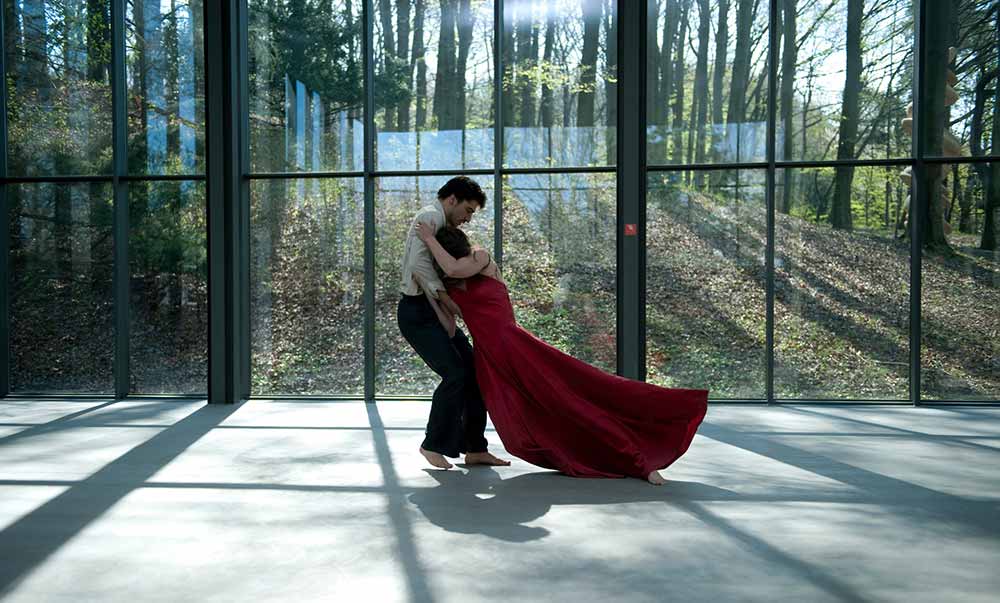
Pina (Wim Winders, 2011): Pina was the first 3D film I saw where the technology floored me. Suddenly, I was in a theatre watching a dance performance on a stage, and I could understand how the bodies were moving in space. It gave me a new understanding of how 3D could be used to drop you into a world, spatially, in documentary, which Wenders would do again for cultural buildings in Cathedrals of Culture (2014), and Werner Herzog did for France’s Chauvet Cave in Cave of Forgotten Dreams (2010).
The Look of Silence (Joshua Oppenheimer, 2014): When I interviewed Oppenheimer about the film, he talked about using sound design to create a ‘magic realist’ documentary. The use of the sound had really stood out to me, and it was the first time I really thought about the power of sound in documentary and how much creative license can be taken.
25 April (Leanne Pooley, 2015): Though certainly not the first animated documentary, it was the first one that I had seen, and it was a completely animated recreation of the ANZAC experience of Gallipoli. The film was visually stunning and opened my eyes to what screenwriting for nonfiction can look like.
At Berkeley (Frederick Wiseman, 2013): Once you’ve been introduced to Wiseman, you discover a whole new way of fly-on-the-wall filmmaking where the editing is just as important — perhaps even more so — than the footage captured. This was my introduction to Wiseman, and I was amazed by how enthralling a four-hour film about an academic institution was. It also made me think so much about the power of editing and juxtaposition in nonfiction filmmaking.
Women He’s Undressed (Gillian Armstrong, 2015): I love that the film is as vibrant, witty, and cheeky as the man it’s about. It’s both a biography and a deep dive into the art of costume design. I love how theatrical the reenactments are: it never tries to trick you into thinking you’re seeing the actual Orry-Kelly, but you feel like you’ve met him and gotten a sense of his personality.
Lindsay Pugh (@womaninrevolt), Contributing Editor at Seventh Row and founder of Woman in Revolt
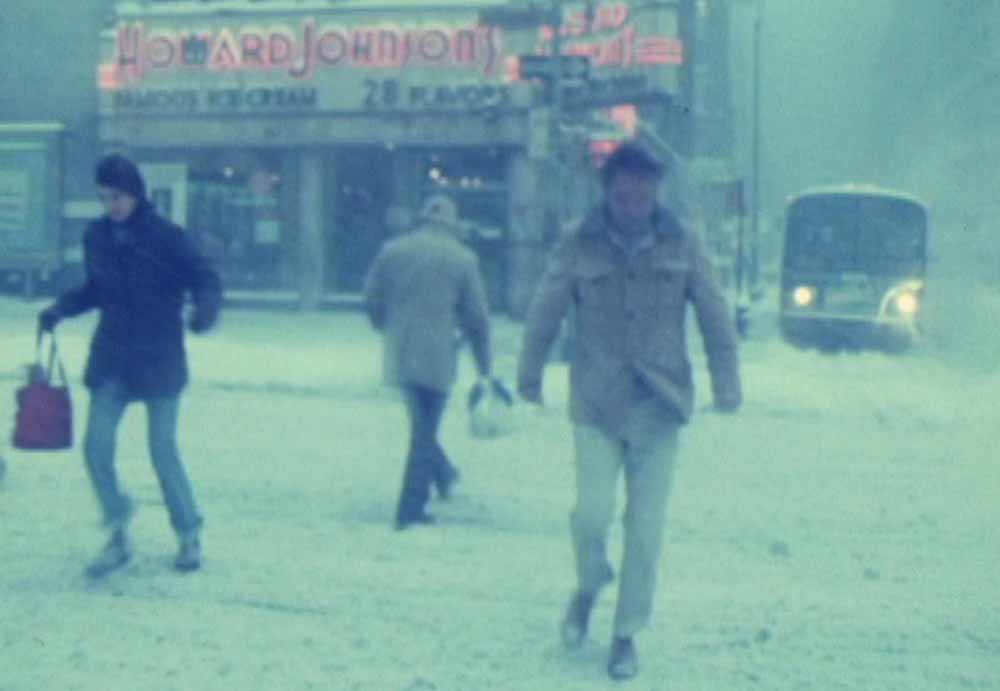
Outtakes From The Life Of A Happy Man (Jonas Mekas, 2012): Created using discarded images from the course of his career, Outtakes is the first film that made me realise how a story — especially a personal one — can morph over the years and be told ‘truthfully’ but differently many times over. As Mekas says toward the end of the film, “They say my images are my memories… No no no… every detail of every image is real… Memories are gone. But images are here. And they’re real.” This film calls into question all of these ideas we have about reality, truth, objectivity, and personal history. After ninety years of life well lived, it’s less about explaining what happened, and more about demonstrating a deep appreciation for the experience and the great fortune to have captured so much of it on film.
News from Home (Chantal Akerman, 1977): I just wrote an essay about this film (and No Home Movie) for the Subjective realities ebook, so I am truthfully sick of thinking about it, but I would be remiss not to include it in this list. It’s a deceptively simple film that uses letters written by Akerman’s mother, Nelly, and images of New York City to loosely tell a plotless story about a first experience away from home. Through meticulous sound design, editing, and shot composition, Akerman provides many emotional layers for the viewer to dissect. She doesn’t lay anything out in a straightforward fashion, but sprinkles breadcrumbs of ‘truth’ for anyone willing to to really pay attention. It’s an incredibly personal, revealing film, but only for patient, empathetic viewers.
Instrument (Jem Cohen, 1999): This is one of the few band documentaries I can think of that doesn’t bore the shit out of me. They’re all so formulaic and often rely primarily on interviews to explain a band’s ethos, fanbase, and influence; this one doesn’t do that. Instead, Cohen uses a variety of images to reconstruct the emotional experience of listening to Fugazi. He slows down footage, edits together disjointed images and sound, and shoots portraits of fans that actually solidify them as real people instead of just faces in a crowd. At one point in the film, co-frontman Ian MacKaye says, “The problem is if you don’t say anything, then people place your thing on you. They say who you are. But then if you try to steer it all, it’s premeditated… You’re manipulating it.” Cohen seems acutely aware of this issue and walks the fine line between doling out objective truths and zero point of view.
Sink or Swim (Su Friedrich, 1990): My favorite film professor of all time, Deanna Kamiel (RIP), recommended this movie to me when I was working on a project about my dad in grad school. In Sink or Swim, Friedrich explores her relationship with her father, but uses several methods to distance herself from the story (not unlike Akerman in News from Home). The film’s voiceover, read by a young girl, uses third person, making the viewer wonder if these events happened to Friedrich or someone else. It’s also not clear where the film’s 16mm footage came from. It’s all black and white and looks quite homogenous even though I now know that it was recorded at different times. Some footage is archival, like the clips from Don Ameche’s International Showtime, but most was either shot by Friedrich herself or by her grandfather during her childhood. Without any preamble, the viewer is thrown into this distant, diaristic environment that is somehow very emotionally charged even though there is no preamble to help orient the viewer. It’s a brilliant film that unconventionally illustrates the issues many of us face when it comes to reconciling our childhoods with who we are as adults.
Hours for Jerome (Nathaniel Dorksy, 1982): I’m one of those people who kind of want all cinema to be slow cinema. Sometimes I don’t want to have to think about plot, facts, or historical context; I just want to experience images as they happen with plenty of time to drift off into my own thoughts. I don’t want to be told what to feel or how to feel it… the filmmaker should trust me to draw my own conclusions, to have my own experience based on what I am shown. Nathaniel Dorsky does that more than any other filmmaker I’ve encountered. He said something I think is so beautiful / that I wish every filmmaker thought about more: “In film, there are two ways of including human beings. One is depicting human beings. Another is to create a film form which, in itself, has all the qualities of being human: tenderness, observation, fear, relaxation, the sense of stepping into the world and pulling back, expansion, contraction, changing, softening, tenderness of heart. The first is a form of theater and the latter is a form of poetry.” Hours for Jerome is only available on celluloid, so jump if you ever get the chance (post-pandemic) to see it.
Jordan Raup (@jpraup), Editor-in-Chief of The Film Stage
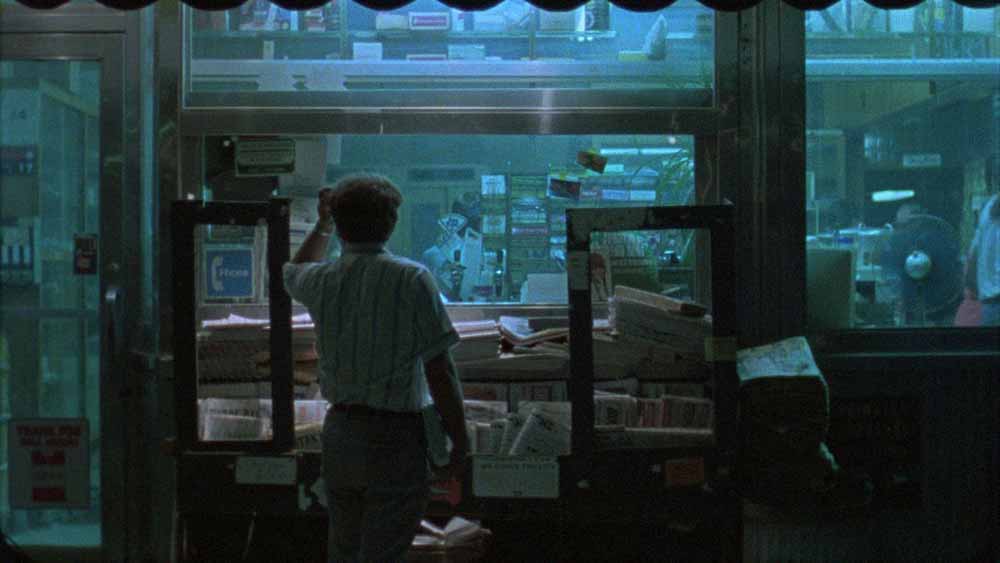
- 24 Frames (Abbas Kiarostami, 2017)
- Dawson City: Frozen Time (Bill Morrison, 2016)
- Leviathan (Lucien Castaing-Taylor, Véréna Paravel, 2012)
- News from Home (Chantal Akerman, 1977)
- Window Water Baby Moving (Stan Brakhage, 1959)
Sophy Romvari (@SophyRomvari), filmmaker of Still Processing
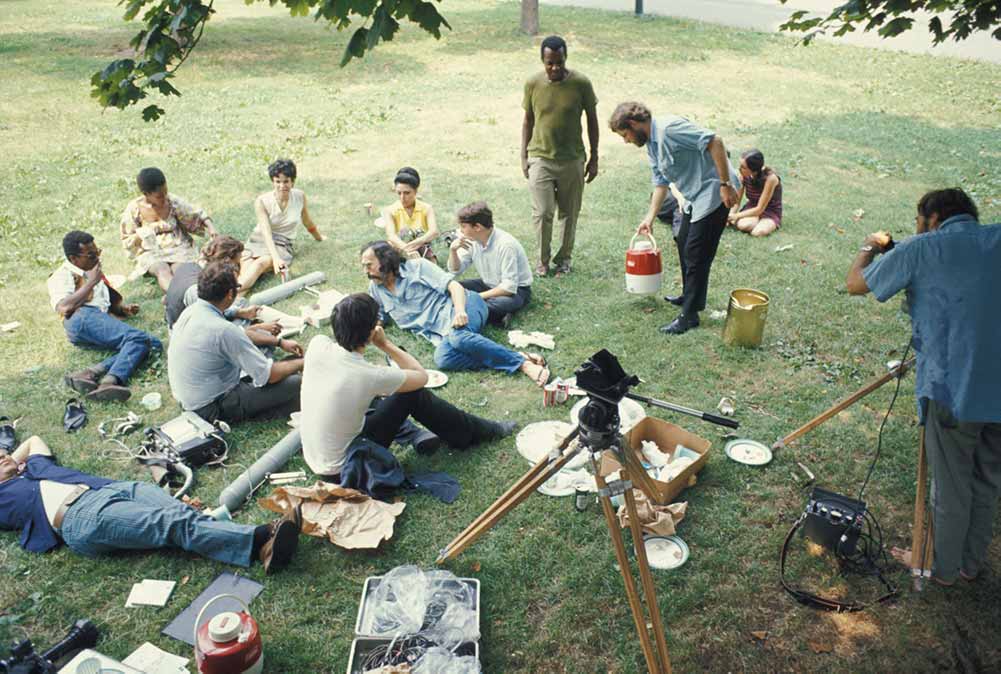
1. Symbiopsychotaxiplasm: Take One (William Greaves, 1968)
2. Cameraperson (Kirsten Johnson, 2016)
3. Close-Up (Abbas Kiarostami, 1990)
4. F for Fake (Orson Welles, 1973)
5. Chronicle of a Summer (Edgar Morin, Jean Rouch, 1961)
Christopher Schobert (@FilmSwoon), Critic at The Film Stage
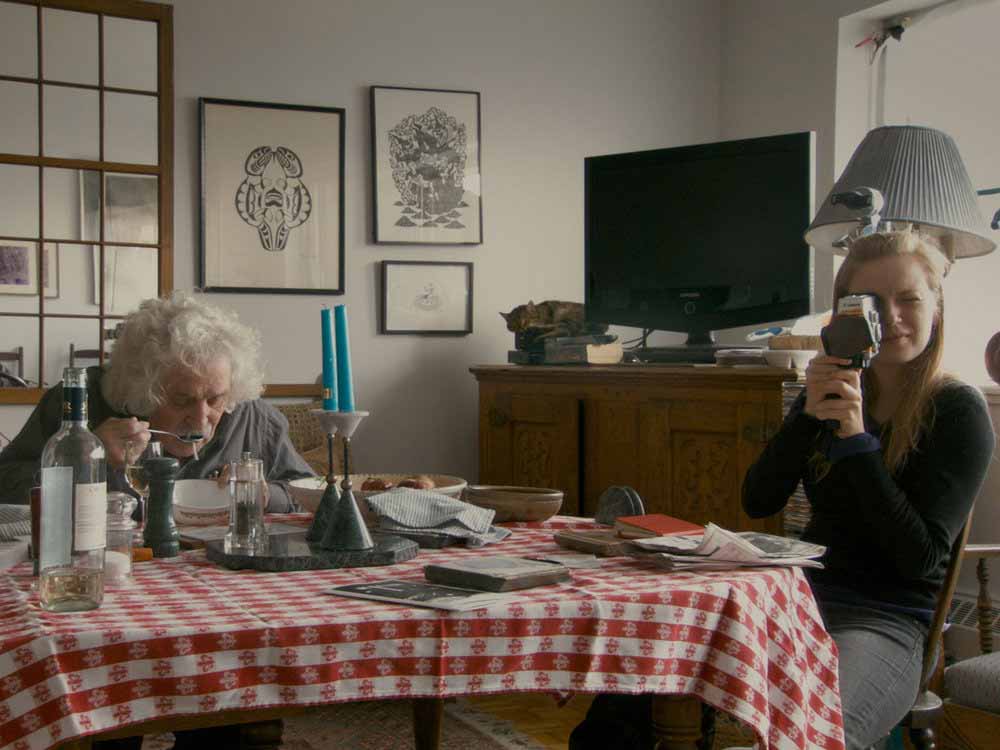
Choosing five life-altering documentaries is, for me, an impossible task; how can I not mention the Up series, The Last Waltz, Night and Fog, Hearts of Darkness: A Filmmaker’s Apocalypse, Crumb, Paris Is Burning, or Grey Gardens? OK, I guess I just did. Those are gems — and so are these five, which all hit me, hard, for different reasons and at different stages of my life.
- The Celluloid Closet (Rob Epstein, Jeffrey Friedman, 1995)
- Hoop Dreams (Steve James, 1994)
- Stop Making Sense (Jonathan Demme, 1984)
- Stories We Tell (Sarah Polley, 2012)
- Z Channel: A Magnificent Obsession (Xan Cassavetes, 2004)
Stephen Silver (@StephenSilver), Film critic
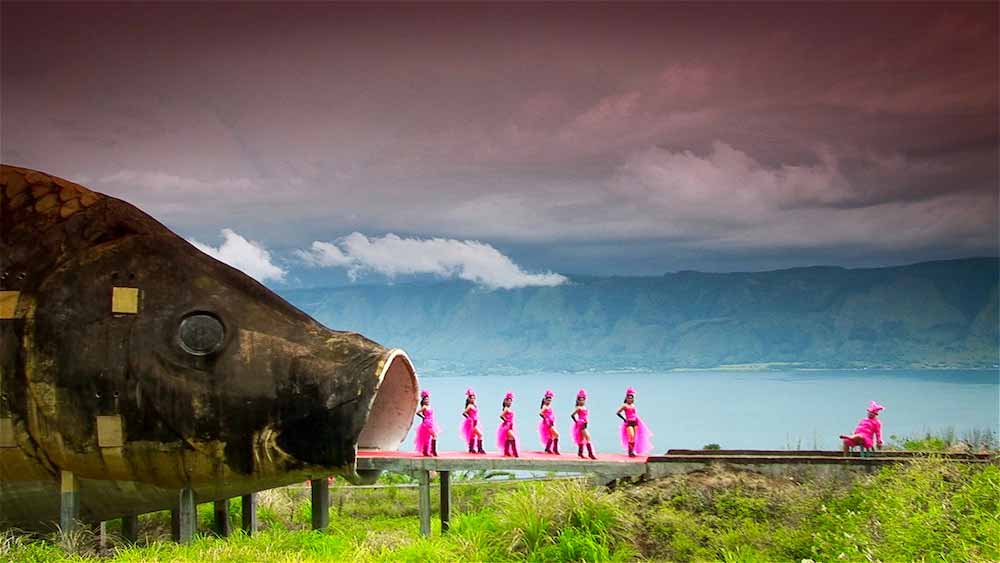
The Act of Killing (Joshua Oppenheimer, 2012): I didn’t think it possible to so vividly recall a past national genocide, while interviewing its perpetrators.
Capturing the Friedmans (Andrew Jarecki, 2003): Just amazing use of archival footage, especially for a film that was originally supposed to be about a birthday party clown.
How to Survive a Plague (David France, 2012): Some objected to the mid-film revelation that several of the subjects are still alive, but I found it very poignant.
Orla Smith (@orlamango), Executive Editor of Seventh Row
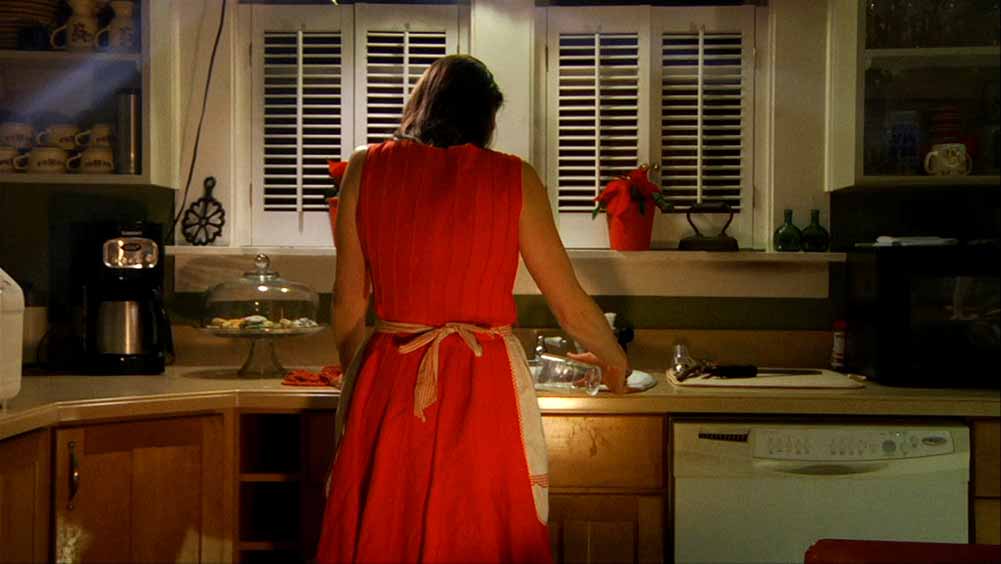
I’ve spent most of my cinephile life prioritising fiction films over nonfiction films, but the last few years have been a revelation, particularly during the process of writing Subjective realities: The art of creative nonfiction film. (You can tell how influential the book writing process was on me, since four out of the five films I’ve listed here are included in the book.) They’re films that triggered an ‘aha!’ moment in me, causing me to expand the box I’d been placing ‘documentary cinema’ into.
Actress (Robert Greene, 2014): As I worked on Subjective realities, I was watching and discussing a lot of documentaries that are radically up front about the process of their own making. I was excited by this idea of total transparency with the audience, e.g. through showing the crew on camera or discussing the origin of the film within the film itself (Dick Johnson is Dead is a good example). Actress was influential because it purposefully doesn’t do that. Greene keeps the purpose of the project and his own intentions ambiguous, which is both frustrating and engrossing, as it causes you to ask fascinating questions about authorship. I realised that, in the right context, ambiguity can be just as fruitful as transparency.
Casting JonBenet (Kitty Green, 2017): I saw Casting JonBenet before I became as interested in nonfiction as I am now. It was an early spark that caused me to realise how interesting creative approaches to the medium could be. I hadn’t been seeking creative nonfiction out before, but the film’s readily-available-ness on Netflix brought it to me. It was also my introduction to what I call ‘the casting conceit’, which I wrote an essay about in Subjective realities.
My First Film (Zia Anger, 2019-present): A lot of these films cause the viewer to ask, where is the line between fiction and nonfiction? My First Film prompts the question, what is cinema? Where is the line between cinema and, say, theatre, or live performance? It’s a live cinema experience, livestreamed via Anger’s desktop, and it’s unlike anything I’d encountered before. It reminded me that there are still new forms of cinema to be explored.
Taste of Cherry (Abbas Kiarostami, 1997): To simplify things, most of Taste of Cherry is fiction, but it slips into nonfiction in its final scene. Watching that scene was like a switch flicking in my head, as I realised, oh, you can just do that! There are no rules.
Watching the Pain of Others (Chloé Galibert-Laîné, 2018): I’ve been fascinated by the screen life genre for a while now, whether it be fiction films (Host, Searching, Profile) or documentaries, such as the work of Kevin B. Lee and Chloé Galibert-Laîné. Essentially, they’re films that take place mostly or entirely on someone’s desktop screen. It’s a new form of cinematic language that’s A) a compelling way to visually represent someone’s thought process and B) incredibly cheap to make, which opens up so many opportunities. I’m super excited by the work Galibert-Laîné is doing in the genre. All her films are available on her website.
Kristal Sotomayor (@kristalsotomayr), Co-Founder of ¡Presente! Media, and Programming Director at the Philadelphia Latino Film Festival
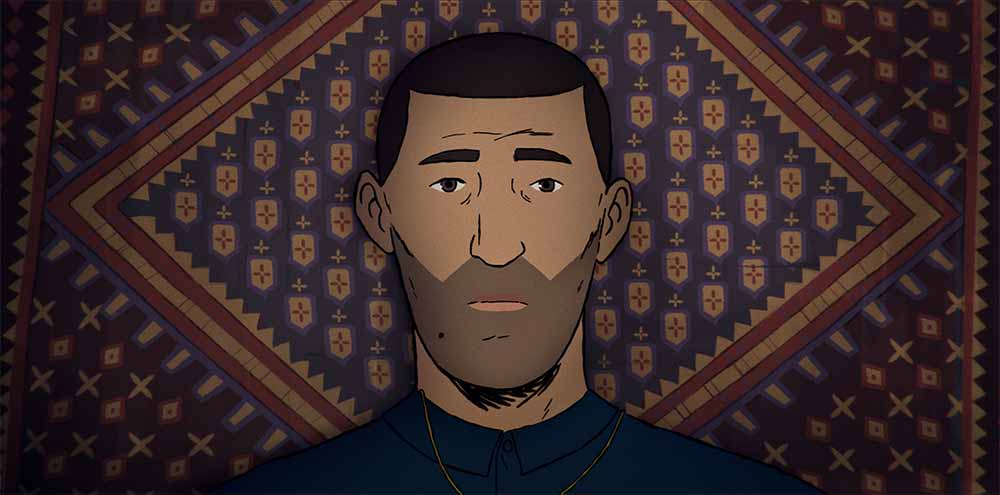
Flee (Jonas Poher Ramussen, 2021): For their inventive use of animation to protect characters yet depict an important story.
Memories of a Penitent Heart (Cecilia Aldarondo, 2016): An incredible use of archival footage paired with a unique intimacy.
The Mole Agent (Maite Alberdi, 2020): An inventive, charming film noir documentary examining aging.
Strong Island (Yance Ford, 2017): The powerful story is amplified by the director’s use of meaningful shots and precise editing.
Time (Garrett Bradley, 2020): One of the most beautiful, meditative and meaningful documentaries of the decade.
Mike Thorn (@MikeThornWrites), author and film critic
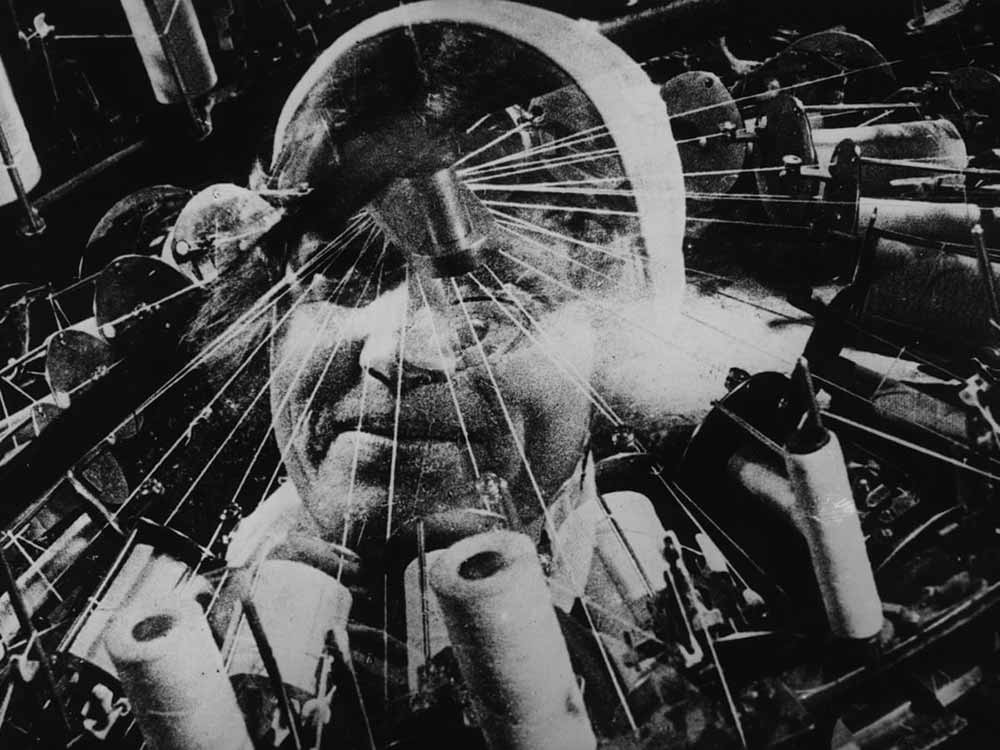
- Man with a Movie Camera (Dziga Vertov, 1929)
- Portrait of Jason (Shirley Clarke, 1967)
- Symbiopsychotaxiplasm: Take One (William Greaves, 1968)
- Lunch Break (Sharon Lockhart, 2008)
- Twenty Cigarettes (James Benning, 2011)
Sarah Williams (@newsfrmhome), Associate Editor of Filmotomy
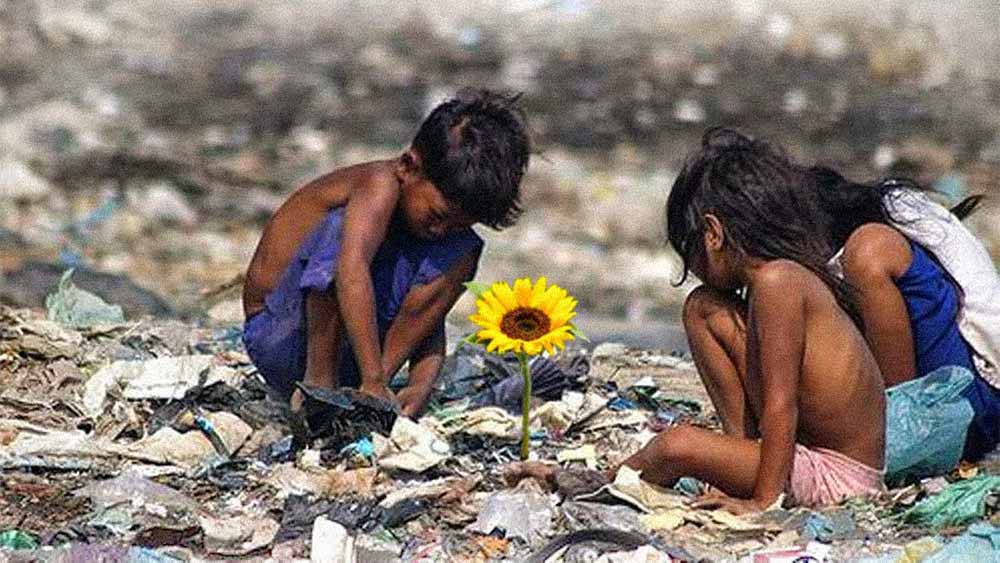
Isle of Flowers (Jorge Furtado, 1989): Written like a sci-fi dystopia, the cycle of life and capitalist influence upon how we eat brings out the rot of society, limiting its scope of an ecosystem to one island to show how dystopic the brutality of the Brazilian class structure becomes.
The Joy of Life (Jenni Olson, 2005): In the tradition of Chantal Akerman’s News From Home, Harry Dodge narrates a two part essay from filmmaker and queer cinema expert Jenni Olson that shows two sides of San Francisco: a narrative of butch longing and loneliness, and the omnipresence of the Golden Gate Bridge as a suicide landmark that makes the occupants never truly alone.
Not a Pretty Picture (Martha Coolidge, 1976): Perhaps one of the cleverest acts of catharsis, Martha Coolidge handles filmmaking ethics by shooting both a reenactment of a traumatic experience as a teenager, and the discussion between actors of how to safely show this, unpacking years of cinematic exploitation to empathetically process on camera both her and her lead actresses connection to the film’s subject matter.
Thank You and Good Night (Jan Oxenberg, 1991): Using a collage style cutout of her childhood self, filmmaker Jan Oxenberg’s growing up and learning how her family processes grief uses its whimsical aesthetics to capture this thought a child’s eye view that cannot process the deterioration of aging.
Why is Yellow in the Middle of the Rainbow? (Kidlat Tahimik, 1994): Kidlat Tahimik takes the approach of a diary not to chronicle the individual, but to weave together a narrative of Filipino history under colonialism, using scenes of his own life as a direct connection into his geography.
